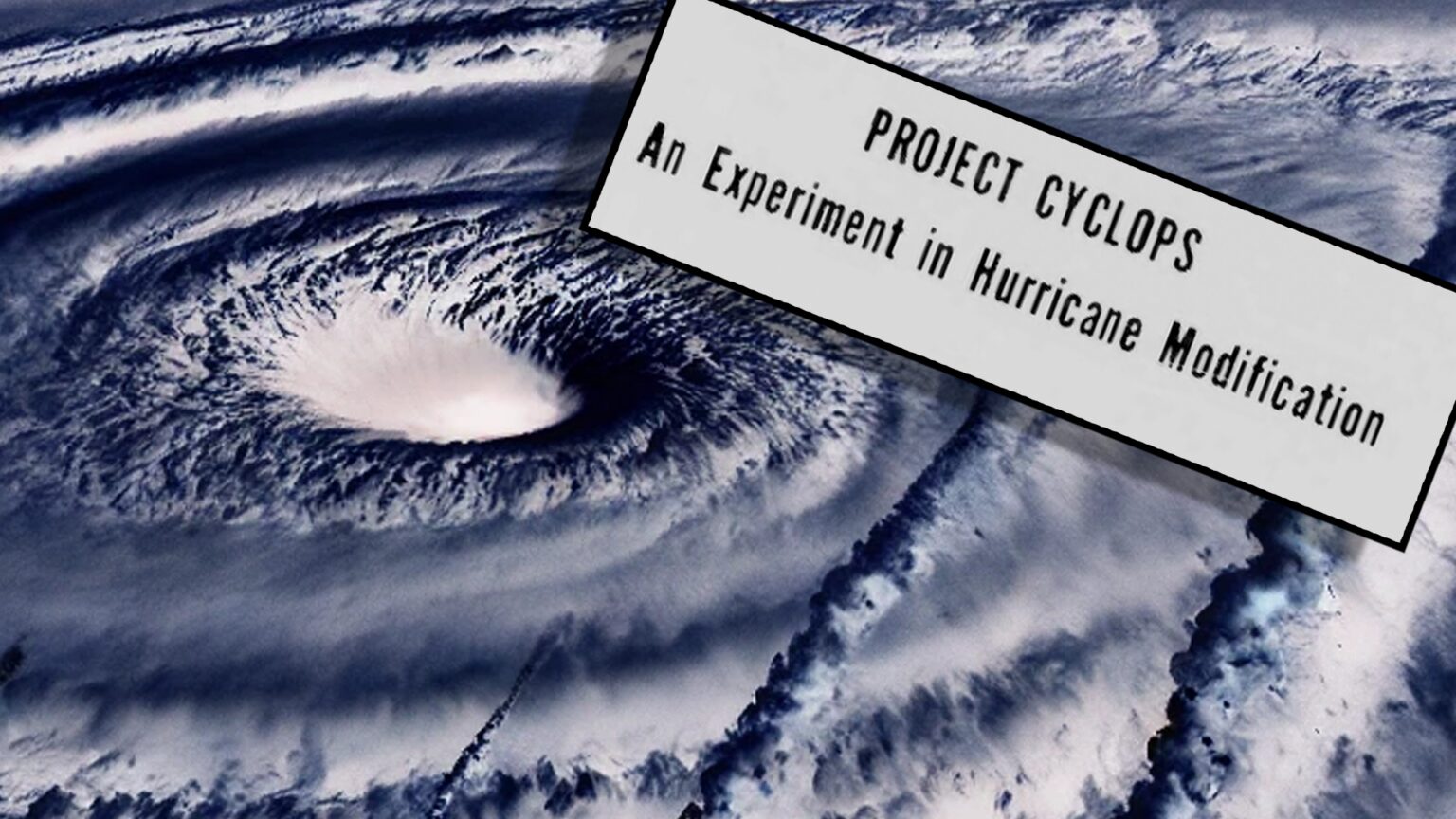 In 1961, the U.S. Naval Ordnance Test Station (NOTS) conducted a groundbreaking experiment aimed at modifying hurricanes, a project known as “Project Cyclops.” This initiative involved an attempt to influence the behavior of hurricanes through cloud seeding, using a specially developed silver iodide dispersal system. The project’s most notable test took place on Hurricane Esther in September 1961.
In 1961, the U.S. Naval Ordnance Test Station (NOTS) conducted a groundbreaking experiment aimed at modifying hurricanes, a project known as “Project Cyclops.” This initiative involved an attempt to influence the behavior of hurricanes through cloud seeding, using a specially developed silver iodide dispersal system. The project’s most notable test took place on Hurricane Esther in September 1961.
The primary objective of Project Cyclops was to disrupt the structure of hurricanes by releasing silver iodide into their cloud systems. Silver iodide acts as a nucleating agent, encouraging the formation of ice crystals from supercooled water droplets within storm clouds. In theory, this process could alter the thermodynamics of a storm, potentially reducing its intensity.

The experiment was a joint effort between NOTS scientists and the Weather Bureau (now known as the National Weather Service, a part of the National Oceanic and Atmospheric Administration [NOAA]). A critical component of the experiment was the Cyclops device, designed to disperse silver iodide into the clouds from an aircraft. The first test was conducted over Hurricane Esther from a U.S. Naval Station in Puerto Rico. Eight Cyclops units were dropped into the northeast quadrant of the hurricane’s wall cloud.
The results were significant, with a “dramatic and radical change in the thermodynamics of the hurricane” observed for approximately one and a half hours following the seeding. The project report noted that the seeded area of the storm experienced a rapid conversion of supercooled water droplets into ice crystals. This led to the formation of a “cup-like” shape in the hurricane’s eye, with the wall cloud appearing to spread outwards. In the words of the report, “the changes in the form of the eye continued for at least an hour and a half,” during which time the eye’s shape oscillated and even resembled a figure 9 before returning to its original circular structure.
 While these results were promising, the project was not deemed a conclusive success. As the report noted, “Had more Cyclops units been available to continue the attack, far more conclusive results might have been achieved.” Despite this, the findings demonstrated the potential of hurricane modification as a viable area of research. NOTS expressed hope to continue experiments with modified Cyclops units during the following year’s hurricane season in 1962.
While these results were promising, the project was not deemed a conclusive success. As the report noted, “Had more Cyclops units been available to continue the attack, far more conclusive results might have been achieved.” Despite this, the findings demonstrated the potential of hurricane modification as a viable area of research. NOTS expressed hope to continue experiments with modified Cyclops units during the following year’s hurricane season in 1962.
The potential implications of Project Cyclops were vast, hinting at a future where hurricanes might be influenced or weakened before making landfall. However, as the results were still preliminary, the project highlighted the need for further experimentation and development. The report concluded with a recommendation to conduct more tests and suggested using smaller Cyclops units for better dispersal and control in future hurricane modification efforts.
For more information, check out the Project Cyclops report below, and browse other “Weather Modification” documents archived here on The Black Vault.
###
Document Archive
 PROJECT CYCLOPS. AN EXPERIMENT IN HURRICANE MODIFICATION [41 Pages, 13MB]
PROJECT CYCLOPS. AN EXPERIMENT IN HURRICANE MODIFICATION [41 Pages, 13MB]
